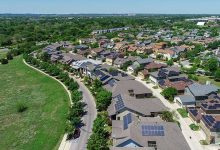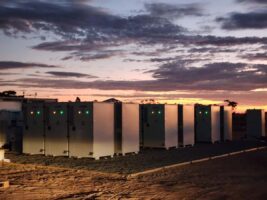South Australia has delayed the date for the introduction of new rules to pave the way for “flexible exports” of rooftop solar – one of the key tools the state plans to use to better manage its huge – and growing – distributed PV resource.
The new regulations, part of the state Labor government’s Smarter Homes Program, will require all new solar systems to be capable of remotely updating their export limits – a capability that will be built into inverters.
Currently in South Australia, residential rooftop solar systems are strictly limited to export 5kW per phase, as a way of exerting at least some visibility and control over how much distributed PV generation comes and goes from the grid.
Flexible exports, which have been trialled over the past year in the state, give households installing new systems the option to export up to 10kW, in return for allowing the network to lower those export limits “periodically” to manage grid stability.
Households installing solar but which don’t want to take part in SA Power Networks’ Flexible Exports scheme can also choose that option, but will be given a hard export limit of 1.5kW.
The new rules mandating all this had been scheduled to come into effect in less than a month’s time, on December 01, but have now been pushed out to July 2023, reportedly to allow inverter manufacturers more time to get up to speed.
Solar Quotes reports that the Office of the Technical Regulator confirmed this change late last week.
“The commencement date for Dynamic Exports is now 1 July 2023 for solar, and we intend to publish amended guidelines allowing until 1 March 2023 for dynamic export requirements for batteries,” a statement said.
Renewable, variable, flexible
South Australia has a world-leading uptake of rooftop solar on its grid and, on the flip-side of that achievement, has been at the bleeding edge of market mechanisms and technologies to securely manage what has become a huge source of variable supply during the middle of the day.
SAPN said last month that it had become a net exporter of energy on 12 occasions so far this year, and seven times in October alone, including one period on October 16 when rooftop solar met all of local demand for a period of more than five hours.
“This is a combination of low energy demand on some milder sunny days and the continued growth of rooftop solar,” SA Power Networks’ head of corporate affairs, Paul Roberts, told RenewEconomy in an emailed statement at the time.
“In the next 5-10 years we expect to see South Australia’s energy needs during the middle parts of the day regularly being supplied 100% from rooftop solar,” he said.
Dynamic or flexible exports are expected to help manage this, limiting the amount of solar households can send to the grid at times of very low minimum demand, and maximising exports at times of peak.
Ultimately, SAPN hopes that tools like this will help it to meet the state target of doubling the amount of rooftop solar on its network by 2025. But for now it seems the technology isn’t quite ready to go.
Currently, only a handful of inverter models from a small number of manufacturers meet the requirements to take part in the trial, and at this stage they all require the addition of a SwitchDin Droplet.
SAPN says Fronius and SMA are working towards providing “native” inverter software to allow flexible exports.
In the meantime, the Australian Energy Market Operator and SAPN will have to manage the coming summer using a much more blunt tool – a solar switch off mechanism the state has had in place since 2020.










